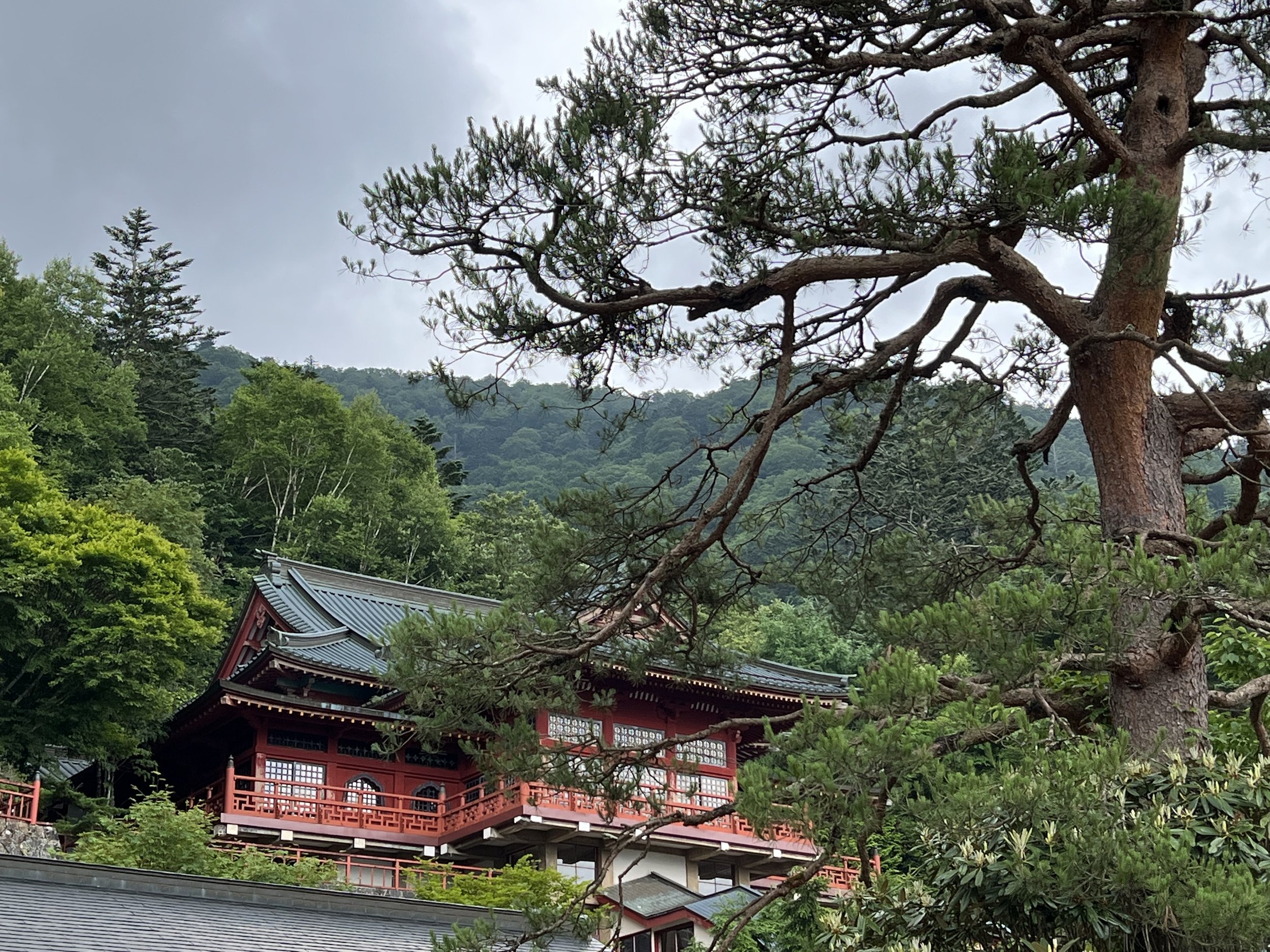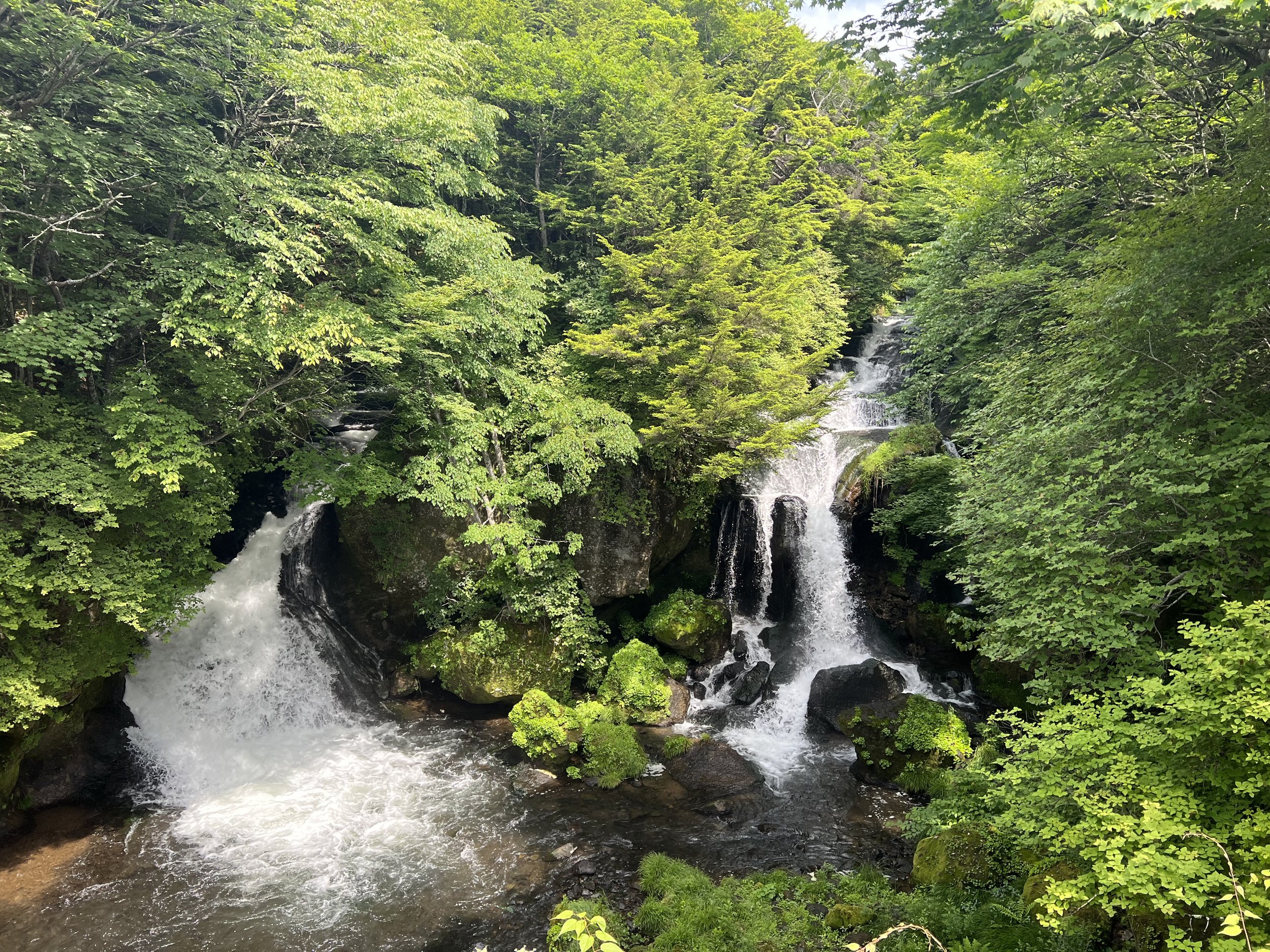Nikko Travel Guide: Best Things to Do, Itinerary, and Must-See Spots
Located in Tochigi Prefecture, Nikko (日光) is an easily accessible destination from Tokyo (around 2-2h30 by train), ideal for a weekend or three-day getaway. In addition to its historical and cultural significance, as home to a major temple complex, Nikko offers scenic mountain scenery, lakes, waterfalls, hot springs and hiking trails.
I have compiled in this detailed guide everything I’ve learnt from having visited Nikko five times, including both popular spots as well as hidden gems not to miss, and I hope that my article can help you make the most of your trip to Nikko.
How to Get to Nikko
Getting to Nikko from Tokyo takes around 2-2h30 depending on the type of train you decide to take.
I recommend taking a train from Asakusa station on the Nikko-Kinugawa line to Tobu-Nikko station on the Tobu line, which takes around 1 hour 50 minutes to over 2 hours, depending on whether you choose a direct limited express train or take two trains. The Tobu line is not covered by the JR Pass, so you'll need to buy a ticket separately even if you have the JR Pass. If you prefer to use your JR Pass to get to Nikko, you can take a shinkansen to Utsunomiya station and catch a local train on the JR Nikko line.
To save some money if you are planning to use public transportation in Nikko, I recommend you buy the Nikko All area pass. This 4-day pass includes not only transport to and from Nikko, but also access to local buses once you arrive in Nikko, free entry to certain visits and attractions, as well as discounts at a number of tourist sites, restaurants and souvenir shops. There is also the Nikko World Heritage Pass (valid for 2 days), that can be interesting if you only have time to visit Nikko central area and not Oku-Nikko. These passes can be bought at Asakusa station at the Tobu Tourist Information Center Asakusa and costs respectively ¥8,000 and ¥3,000. You can also purchase your Nikko Pass in advance in a digital format on Klook.
Best Things to Do in Nikko
1. Walk along Nikko’s Main Street to Shinkyo Bridge
Once out of Nikko station, you can follow the main street up on your right, which will take you to the entrance to Nikko National Park. Along the way you'll find several restaurants (I tried Nikko Yotaro and had a delicious and cheap lunch there), cafés and souvenir shops all the way to Shinkyo Bridge (神橋), generally the first landmark of Nikko visitors see.
Built in 1636, Shinkyo Bridge is a red lacquered bridge that stands at the entrance to Nikko's shrines and temple area. It is considered one of the three most beautiful bridges in Japan, along with Saruhashi in Yamanashi Prefecture and Kintaikyo in Iwakuni. You can admire from the nearby street or decide to pay ¥500 to step on it.
2. Visit UNESCO World Heritage Shrines and Temples
The shrines and temples of Nikko form one single complex composed of 103 religious buildings within two Shinto shrines, Toshogu-jinja (日光東照宮) and Futarasan-jinja (日光二荒山神社), and one Buddhist temple, Rinno-ji (日光山 輪王寺).
The first shogun of the Tokugawa shogunate, Tokugawa Ieyasu’s remains are entombed at Nikko Toshogu Shrine while his grandson Tokugawa’s Iemitsu lies in Rinnoji Taiyuin (輪王寺大猷院). Admission to Nikko Toshogu Shrine is quite expensive as it costs ¥1,600 for the shrine, ¥1000 for the museum or ¥2400 for a combined shrine and museum ticket (buy your ticket in advance on KKday). I have not personally been to the Toshogu shrine yet, but would definitely recommend visiting Taiyuin. It is less crowded than the rest of Nikko’s temple and shrines complex, only costs ¥550 and the compound has elaborate designs and offers a very peaceful atmosphere.
3. Enjoy a Peaceful Stroll Through a Small Gorge
Kanmangafuchi Abyss(憾満ヶ淵) is a small gorge near Nikko's main temple and shrine complex, known for its seventy 'Jizo' stone statues. It was formed by an eruption of nearby Mount Nantai. It's a very peaceful and photogenic spot that can be enjoyed from a pleasant riverside walking path.
4. Enjoy a Scenic Bus Ride on the Irohazaka Winding Road to Oku-Nikko Area
Whether by car or bus, to reach the mountainous Oku-Nikko region you'll need to take the winding Irohazaka Road (いろは坂), with its 48 hairpin bends, offering stunning views of the valley on a clear day and making up one of Japan's most iconic autumn landscapes. It takes around 40-50 minutes to reach Chuzenji, the entrance to the Oku-Nikko region (not in autumn, when heavy traffic, especially on weekends, can make it much longer).
On the way, near the top of the Akechidaira plateau, there is an observation deck (明智平ロープウェイ) offering panoramic views over the Kegon waterfalls and Lake Chuzenji. It is open from 9am to 3.30pm and costs ¥600 one-way and ¥1,000 round trip.
5. Admire the Majestic Kegon Waterfalls
Once you arrive at the Chuzenji Onsen bus station, if you walk about 5 minutes to your right, you can reach the observation platform for the Kegon Falls (華厳滝). Located on the shores of Lake Chuzenji and around 100 metres high, they are considered to be one of the most beautiful waterfalls in Japan.
I've always enjoyed the view from the free viewing platform, but you can also take a lift to the lower viewing platform for ¥600.
There are a few restaurants and food stalls close to the viewing platform, so you can stop for a quick snack like dango or karaage.
6. Explore Lake Chuzenji’s Attractions
Lake Chuzenjiko (中禅寺湖) is a 25km-circumference lake created 20,000 years ago by the eruption of Mount Nantai. You can explore the shores of Lake Chuzenji near the Kegon waterfalls, with most sightseeing spots being on the eastern side, around the small hot spring town of Chuzenji Onsen, with its huge torii gate at the entrance.
If Nikko's temples aren't enough for you, you can visit a Buddhist temple, Chūzen-ji Temple (中禅寺), for an entrance fee of ¥500, as well as a shrine, Nikko Futarasan Jinja Chugushi Shrine (日光二荒山神社 中宮祠), which also marks the start of the Mount Nantai hiking trail to the summit (see below).
Chūzen-ji Temple
Interestingly, it is also possible to visit two embassy villas (the Italian and British) which are open to the public. As well as learning more about the history of relations between these two countries and Japan, the architecture and furnishings and the view over the lake from these two villas make for an enjoyable experience. You can buy a combined ticket to visit both buildings for ¥450.
British Embassy’s villa
Italian’s Embassy’s villa
If you want to explore the rest of the lake area, you can also walk or bike around the 25-kilometre circumference of Lake Chuzenji along the forest paths that border the lake.
7. Go on a Boat Tour Around Lake Chuzenji
For a fun way to explore Lake Chuzenji, consider taking a sightseeing boat from Chuzenji Onsen. This cruise offers scenic stops at Shobugahama Pier, near Ryuzu Waterfall, and another pier close to the Italian and British Embassy villas, as well as Chuzenji Temple. On clear days, this boat ride is highly recommended to fully appreciate the lake's beauty, especially during autumn when the fall foliage is at its peak. Plus, the boat ride is included in the Nikko All Area Pass, making it a convenient and budget-friendly option!
8. Hike Mount Nantai
At 2,486 metres above sea level, Mount Nantai (男体山), located on the northern shore of Lake Chuzenji, is one of Japan's 100 most famous mountains. A four-kilometre mountain trail leads to the summit from Futarasan Jinja and is open to hikers from May to October each year. The hike takes between three and four hours and is fairly strenuous. It is therefore generally only recommended for experienced hikers. I've already done part of this hike (up to the 5th or 6th station), but had to stop and come back down because of a sudden change in the weather.
9. Explore Oku-Nikko National Park
There's another hike I'd recommend, more suitable for beginners, which I like to call the 'waterfall hike'. As the name suggests, the main attractions are Ryuzu Falls (竜頭ノ滝), which marks the starting point of the hike, all the way to Yudaki Falls (湯滝) near Lake Yunoko. But there are other magnificent sites along the way, such as a beautiful, dense forest walk along the river and the Senjogahara marshland (戦場ヶ原).
Ryuzu falls
Senjogahara Marshland
Yudaki Falls
I'll write in the future a dedicated article on these two hikes (Mount Nantai and Oku-Nikko waterfalls) so please be patient, and if you want more info in the meantime, don't hesitate to subscribe to my monthly newsletter to be informed when it will be published. :)
10. Visit Yumoto Onsen
Yumoto (湯元) is a small hot spring town at the back of Oku-Nikko, located next to Lake Yunoko (湯ノ湖) and consisting mainly of ryokan with hot spring baths. As well as enjoying the peace of nature and strolling along the shores of the lake, you can also visit Mt. Nikko Onsenji (日光山 温泉寺), an unusual temple that houses an onsen on its grounds, and try the Anyo-No-Yu footbath.
Yunoko lake
Other Ideas for Your Trip to Nikko
If you're looking for more ideas of things to see and do around Nikko, below are some suggestions of places I've noted but not yet had a chance to visit myself:
Tamozawa Imperial Villa (日光田母沢御用邸記念公園) - a historic building that served as the residence of the Tokugawa family, with 106 rooms combining Edo, Meiji and Western architecture and design.
Edo wonderland (日光江戸村) - a theme park celebrating Japan's Edo period (1603-1868), about 15km from Nikko (get your ticket in advance on Klook).
Tobu World Square (東武ワールドスクウェア) - a theme park dedicated to miniature replicas of famous landmarks around the world (purchase your ticket in advance on KKday).
Additionally, you might want to consider joining a Get Your Guide tour matching your schedule and interests (private walking tour with a local guide…).
For a unique and high-end cultural experience, you can also check Wabunka’s Ogasawara-style Archery and Private Prayer Tour at Nikko Toshogu Shrine, an opportunity to practice kyudo or yabusame (non-mounted and mounted archery, respectively), offer prayers and take a guided tour at the Nikko Toshogu Shrine World Heritage site.
Image courtesy of Wabunka
All My Recommendations in a Map
Best Time to Visit Nikko and How Long to Stay
My favourite time to visit Nikko is autumn or summer, to enjoy the bright green colours of nature while escaping the summer heat (the temperature is quite pleasant around 25-28 degrees).
In autumn, the best time to see fall foliage in Nikko typically ranges from early October to mid-November, depending on the elevation:
At higher elevations (such as around Lake Chuzenji and the area near Kegon Falls), autumn colors usually start changing color in early to mid-October.
At lower elevations, including the Toshogu Shrine area, the peak tends to be around late October to early November.
The vibrant colors are often most intense in mid-October, making it a great time to plan a visit. Bear in mind that Nikko becomes very crowded on autumn weekends, which can spoil your experience if you don't plan ahead.
In terms of duration, I recommend staying at least two days and one night in Nikko or, ideally, spending three days and two nights (including transport to and from Tokyo or another destination on the first and third days).
Where to Stay Around Nikko
There are three main areas where to stay in Nikko: the town of Nikko, around Chuzenji lake or Yunoko Lake, and at Kinugawa onsen, a hot spring resort along the Kinugawa River near Nikko.
When I visit Nikko, I always like to stay around Chuzenji for the wonderful landscapes and convenient location between Nikko town area and the Oku-Nikko National Park. There are several hotel options around Chuzenji lake for a relaxing stay with hot spring baths, such as Chuzenji Kanaya Hotel, Hotel Shikisai or Hatago Nagomi.
➡️ You can compare prices and availability on sites like Agoda or Booking.com to find the accommodation that best fits your budget and travel dates.
Recommended Nikko Itineraries
2-Day Nikko Itinerary
Day 1: Nikko Central Area - Travel in the morning from Tokyo to Nikko, lunch in Nikko main shopping street, Shinkyo Bridge, Toshogu-jinja, Futarasan-jinja, Rinno-ji (if time, Kamangafuchi Abyss and Tamozawa Imperial Villa), Irohazaka Winding Road and Akechidaira observatory. Sleep in Chuzenji Onsen.
Day 2: Oku-Nikko area - Kegon Falls, Nikko Futarasan Jinja Chugushi Shrine, Chūzen-ji Temple, cruise around lake Chuzenjiko, travel back in the afternoon to Nikko and Tokyo.
3-Day Nikko Itinerary
Day 1: Nikko Central Area - Travel in the morning from Tokyo to Nikko, lunch in Nikko main shopping street, Shinkyo Bridge, Toshogu-jinja, Futarasan-jinja, Rinno-ji (if time, Kamangafuchi Abyss and Tamozawa Imperial Villa), Irohazaka Winding Road and Akechidaira observatory. Sleep in Chuzenji Onsen.
Day 2: Hiking in Oku-Nikko - One of the two hikes suggested (depending on your hiking level and the weather, Mount Nantai or the waterfalls hike in Oku-Nikko).
Day 3: Oku-Nikko area - Kegon Falls, Nikko Futarasan Jinja Chugushi Shrine, Chūzen-ji Temple, cruise around lake Chuzenjiko, travel back in the afternoon to Nikko and Tokyo.
Special Itinerary to Discover Nikko in Autumn 🍁
If you visit in autumn, to avoid traffic, I would invert this itinerary suggestion:
Day 1: Travel in the morning from Tokyo to Nikko, take the bus directly to the Oku-Nikko area - Irohazaka Winding Road, Akechidaira observatory, Kegon Falls, Nikko Futarasan Jinja Chugushi Shrine, Chūzen-ji Temple, cruise.
Day 2 (optional): One of the two hikes suggested (depending on your hiking level and the weather, Mount Nantai or the waterfalls hike in Oku-Nikko)
Day 3: Travel early back to Nikko from Chuzenji Onsen to Nikko shrines and temple complex (Shinkyo Bridge, Toshogu-jinja, Futarasan-jinja, Rinno-ji (if time, Kamangafuchi Abyss and Tamozawa Imperial Villa)), lunch in Nikko main shopping street, Edo Wonderland if time, travel back to Tokyo in the afternoon.
Travel Tips to Enjoy your Time in Nikko
1. Dining Options Are Limited in the Evening
If you're planning to stay overnight in Nikko, be aware that most restaurants in Nikko or the Chuzenji area are only open during the day, and many close around 6pm. So it's best to find accommodation that offers dinner and breakfast, or plan to do some shopping in advance. There is a large grocery shop near Nikko station called Lion D'or Nikko Store, as well as kombinis. In Chuzenji Onsen, there's only a small grocery shop with a limited selection called 中禅寺ストアー みむらや open from 9am to 8pm (closed on Sundays).
2. If You Travel by Local Bus in the Nikko Region, You Need to Plan Ahead
There aren't many buses between Nikko and Chuzenji Onsen or Lake Yunoko (1 or 2 an hour), and the last bus arrives around 5pm. That’s a general recommendation when traveling in the countryside in Japan, but you should always check the bus timetable in advance at the train station or at the bus stop. At Nikko station, you can obtain a brochure in English with detailed bus timetables.
3. Be Prepared for Autumn Crowds
Due to Nikko's autumn popularity, traffic can become very difficult along the Irohazaka, causing long delays for cars and buses. Visitors are advised to avoid weekends and public holidays and to leave as early as possible. Personally, I had a very bad experience visiting Nikko in autumn on a weekend a long time ago, with a very long bus journey to Chuzenji where I eventually decided to finish on foot as it was quicker than the bus, then had to start queuing for the bus back from Chuzenji to Nikko station about 40 minutes early as there was already a queue.
4. Be Aware of the Possible Presence of Bears in Oku-Nikko
If you decide to explore Oku-Nikko and do a few hikes in the forest, you will most likely come across signs warning you of the possible presence of bears. I've never seen one on my hikes, but Japanese hikers tend to carry a bell to scare off bears. If you're worried about a possible encounter, such an item could be a worthwhile investment for you (but very unlikely if you stay on the hiking trails).
5. Be Prepared for the Difference in Temperature Between Nikko and Oku-Nikko
If you're visiting both areas during your trip, I suggest you take something warmer for your stay in Oku-Nikko, as there are a few degrees of difference as you go up in the mountains.
Final Thoughts on Nikko
Nikko is a lovely and easy getaway from Tokyo, with so much to do. The nature and landscapes of Nikko National Park are simply magnificent. After 5 visits, I still can't get enough of this beautiful place, and would highly recommend to visit it either in autumn or summer. Will you add Nikko to your Japan bucket list?
Looking for more autumn foliage spots in Tokyo? You can read my article “Autumn in Tokyo: 17 Top Fall Foliage Spots and Best Day Trips” or check out all my Japan autumn articles to prepare for this incredible season. 🍁
Found this article helpful? Buy me a coffee. 😊
Want to stay in touch? Subscribe to my monthly newsletter (with latest articles, updates, travel tips and more...) delivered straight to your inbox. 📩
This article was originally published on June 29 2023 and updated on October 01 2025.
Some of the links in this Nikko Guide and Itinerary are affiliate links. At no extra cost to you, I may earn a small commission when you click on them and make a purchase. And if you do, thanks for your support! Purchasing through these links is a great way to support Travely Notes, as this helps with the costs of running my blog.




























